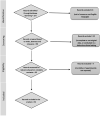N-Acetylcysteine for Preventing Acetaminophen-Induced Liver Injury: A Comprehensive Review
- PMID: 36034775
- PMCID: PMC9399785
- DOI: 10.3389/fphar.2022.828565
N-Acetylcysteine for Preventing Acetaminophen-Induced Liver Injury: A Comprehensive Review
Abstract
Aims: N-Acetylcysteine (NAC) is used as an antidote in acetaminophen (APAP) overdose to prevent and mitigate drug-induced liver injury (DILI). Our objective was to systematically review evidence of the use of NAC as a therapeutic option for APAP overdose and APAP-related DILI in order to define the optimal treatment schedule and timing to start treatment. Methods: Bibliographic databases (PubMed, Web of Science, Embase, and MEDLINE) were searched for retrospective and prospective cohort studies, case series, and clinical trials. The prespecified primary outcomes were DILI-related mortality, hepatotoxicity, and adverse events (AEs). Results: In total, 34 studies of NAC usage in APAP-related DILI cases with 19,580 patients were identified, of which 2,376 patients developed hepatotoxicities. The mortality rate across different studies ranged from 0 to 52%. Large variability of NAC regimens was found, i.e., intravenous (I.V.) (100-150 mg/kg) and oral (70-140 mg/kg), and length of treatment varied-12, 24, or 48 h for I.V. regimen and 72 h for oral administration. The timing of initiation of NAC treatment showed different results in terms of occurrence of hepatotoxicity and mortality; if started within 8 h and no more than 24 h from APAP overdose, either intravenously or orally, NAC administration was efficacious in terms of mortality. The most frequent AEs reported were anaphylactic reactions, followed by cutaneous AEs for the IV route and intestinal AEs for the oral one. Conclusion: NAC improves hepatotoxicity and reduces mortality. Timing of treatment, ranging from 8 to 24 h from APAP overdose, regardless of the regimen or route of administration, is important to prevent or minimize liver damage, particularly in children and in elderly and obese patients.
Keywords: N-acetyl-cysteine; acetaminophen; drug-induced liver injury; hepatotoxicity; safety.
Copyright © 2022 Licata, Minissale, Stankevičiūtė, Sanabria-Cabrera, Lucena, Andrade and Almasio.
Conflict of interest statement
The authors declare that the research was conducted in the absence of any commercial or financial relationships that could be construed as a potential conflict of interest.
Figures
References
-
- Bateman D. N., Dear J. W., Thanacoody H. K., Thomas S. H., Eddleston M., Sandilands E. A., et al. (2014). Reduction of Adverse Effects from Intravenous Acetylcysteine Treatment for Paracetamol Poisoning: a Randomised Controlled Trial. Lancet 383, 697–704. 10.1016/S0140-6736(13)62062-0 - DOI - PubMed


